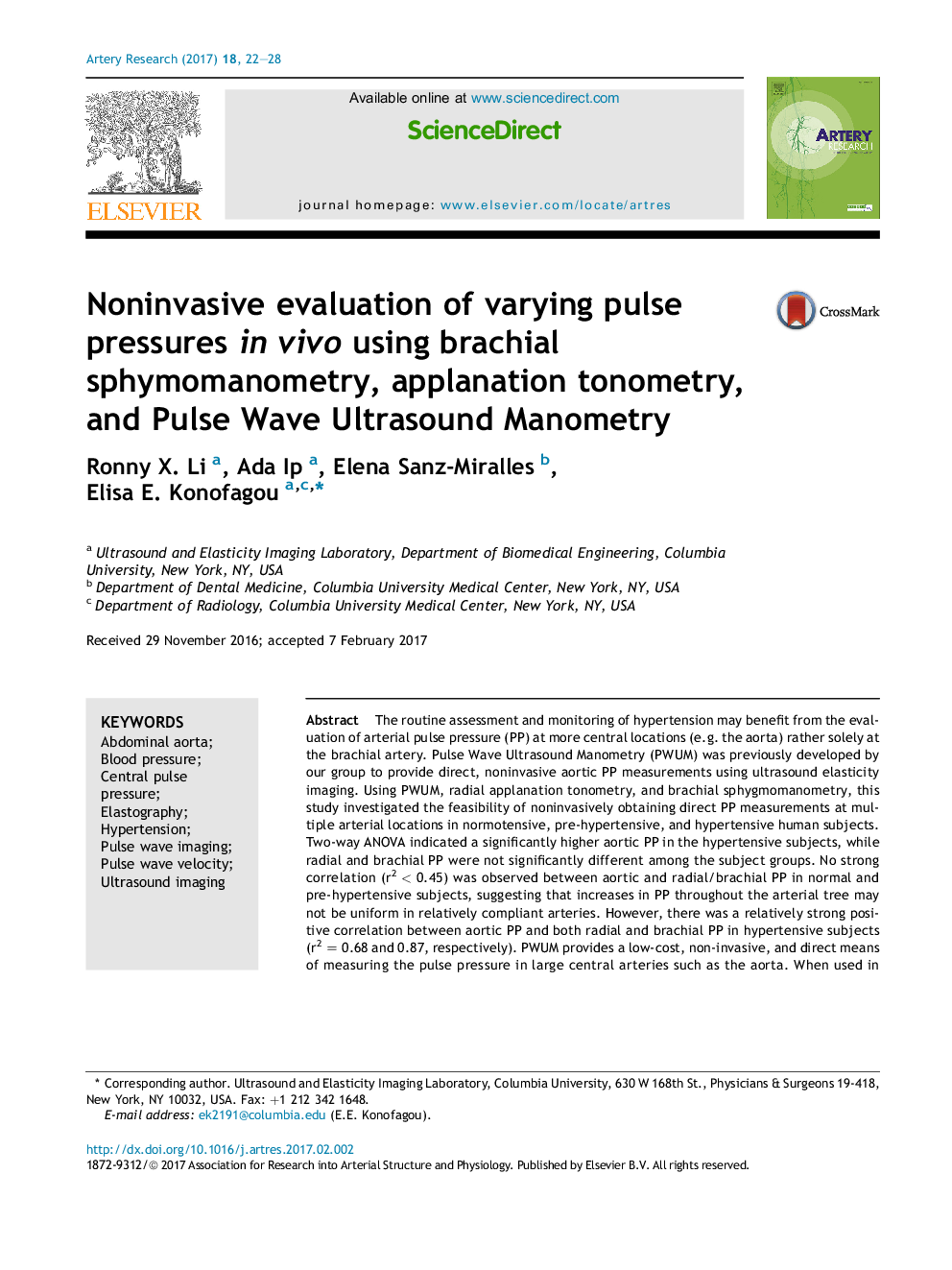| Article ID | Journal | Published Year | Pages | File Type |
|---|---|---|---|---|
| 5599209 | Artery Research | 2017 | 7 Pages |
Abstract
The routine assessment and monitoring of hypertension may benefit from the evaluation of arterial pulse pressure (PP) at more central locations (e.g. the aorta) rather solely at the brachial artery. Pulse Wave Ultrasound Manometry (PWUM) was previously developed by our group to provide direct, noninvasive aortic PP measurements using ultrasound elasticity imaging. Using PWUM, radial applanation tonometry, and brachial sphygmomanometry, this study investigated the feasibility of noninvasively obtaining direct PP measurements at multiple arterial locations in normotensive, pre-hypertensive, and hypertensive human subjects. Two-way ANOVA indicated a significantly higher aortic PP in the hypertensive subjects, while radial and brachial PP were not significantly different among the subject groups. No strong correlation (r2 < 0.45) was observed between aortic and radial/brachial PP in normal and pre-hypertensive subjects, suggesting that increases in PP throughout the arterial tree may not be uniform in relatively compliant arteries. However, there was a relatively strong positive correlation between aortic PP and both radial and brachial PP in hypertensive subjects (r2 = 0.68 and 0.87, respectively). PWUM provides a low-cost, non-invasive, and direct means of measuring the pulse pressure in large central arteries such as the aorta. When used in conjunction with peripheral measurement devices, PWUM allows for the routine screening of hypertension and monitoring of BP-lowering drugs based on the PP from multiple arterial sites.
Keywords
Related Topics
Health Sciences
Medicine and Dentistry
Cardiology and Cardiovascular Medicine
Authors
Ronny X. Li, Ada Ip, Elena Sanz-Miralles, Elisa E. Konofagou,
